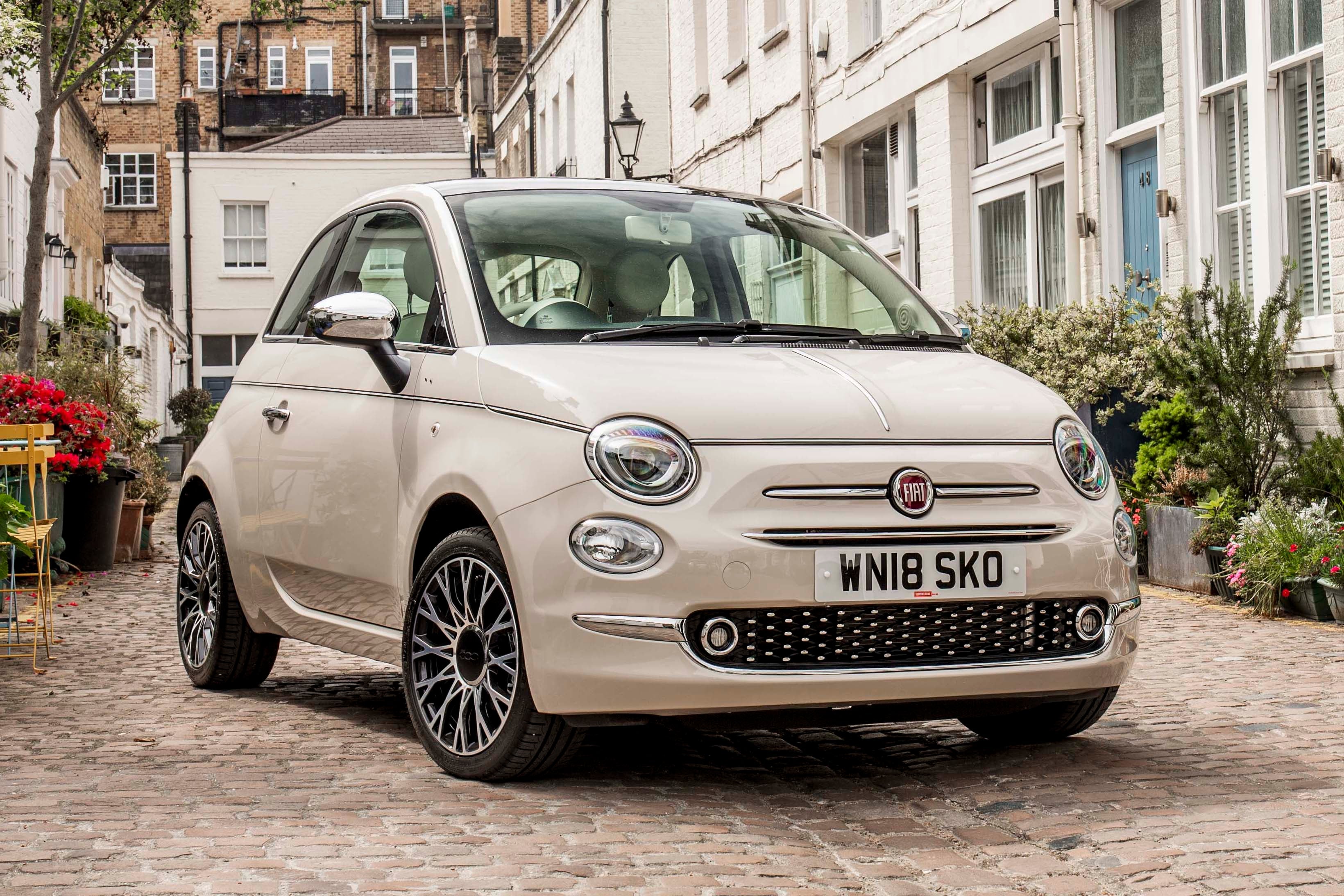Fiat 500 Review 2025: Price, specs & boot space
Written by Andrew Brady
Quick overview
Pros
- Chic styling
- Low fuel costs
- Mid-spec models are well-equipped
Cons
- Cramped cabin
- Lacklustre handling
- Unrefined Dualogic automatic gearbox
Overall verdict on the Fiat 500
"The Fiat 500 is a stylish city car that uses its classic heritage to pull at your heartstrings. However, while chic and retro, the 500 falls flat in several important areas. That said, if you love the looks, you'll probably be happy to overlook its many shortcomings."
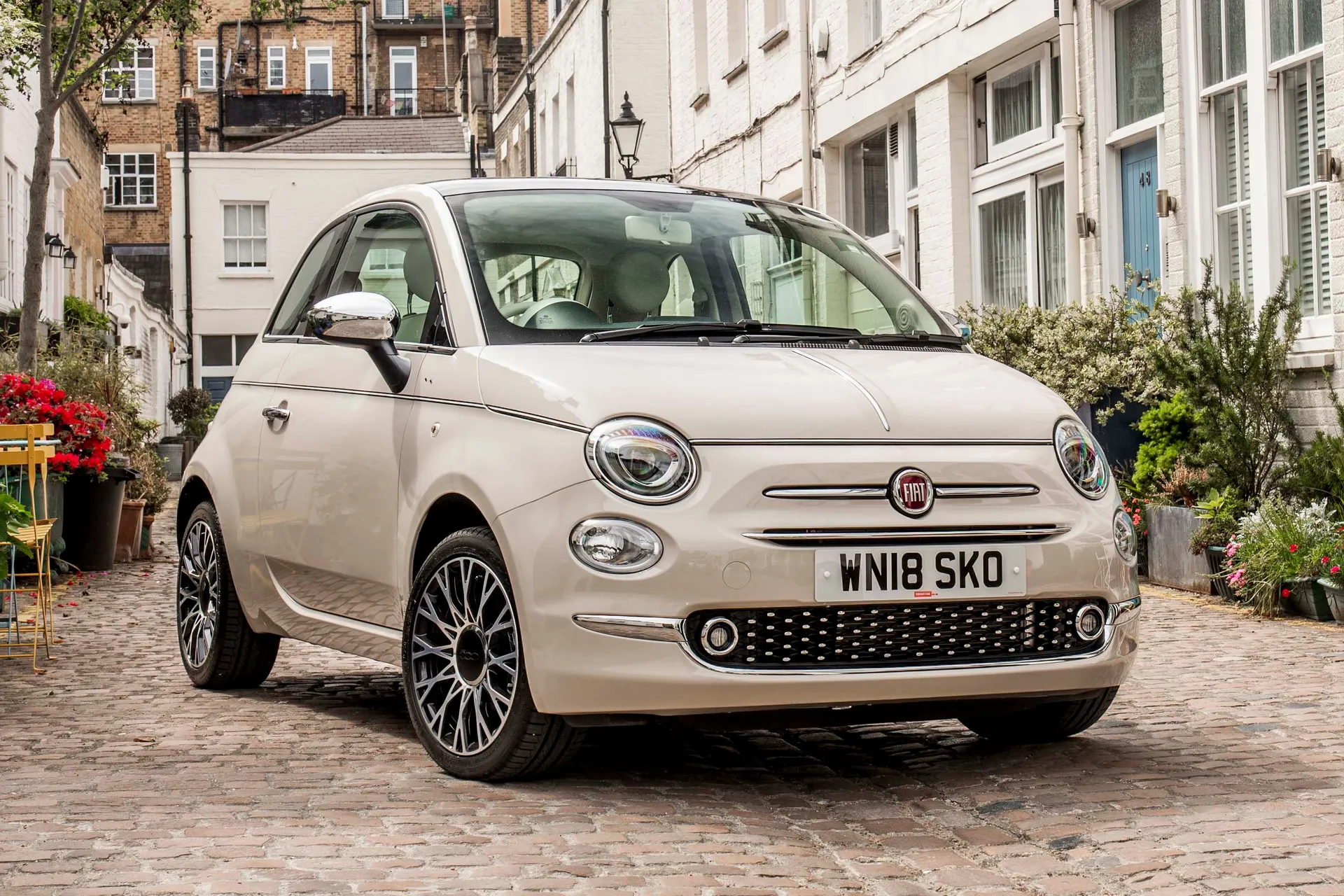
Inspired by the 1957 classic, the Fiat 500 delivers modern city car motoring with an Italian twist. However, like an ice cream left in the Italian sun, the 500 wavers when you compare it to the best in class from Volkswagen, Kia and Suzuki. Continue to read our full Fiat 500 review to find out how it stacks up.
But let's be honest, if you’re here it’s probably because you’ve already fallen in love with the retro looks of the Fiat 500. And we agree: the Fiat 500 is one of the best-looking city cars you can buy. Its compact and cute styling gives a sizeable nod to past. However, while the 500 is undeniably one of the most attractive small cars on sale, it also has the tendency to be one of the most frustrating.
Most of the Fiat 500's problems are caused by the fact it's very small. The cabin is cramped, the seats are narrow and the boot is barely large enough to cope with a weekly food shop. Technically, the 500 is a four-seater, but only children will be able to make use of the rear seats.
Mid-spec versions of the 500 are advertised with a height adjustable driver’s seat, but the lever at the side only changes the angle of the seat base rather than the height. The steering doesn’t have any reach adjustment, either, which means short and tall people will find the 500 equally frustrating when trying to find a decent driving position.
The 500 isn't particularly good to drive, either. The steering is light and accurate, but there isn’t a great feel of feedback via the wheel or pedals. This isn’t really a problem below 30mph, but take this small Fiat onto a twisty A road at 50mph and the overassisted steering makes it difficult to find any bond with the handling. The 500 is a safe and predictable car to drive (there's plenty of grip) but there is very little fun to be had from this pint-sized Fiat.
The handling is further diminished by the soft suspension, which results in a bouncy and uncomfortable ride quality at low-speeds. Things do settle down when you venture past 50mph, but there’s lots of sideways travel in the suspension and this means even a moderate turn will cause the body of the 500 to roll heavily.
Most versions measure just 3.6 metres in length, which makes the 500 an easy thing to to live with in a town or city where space is limited. What’s more, at 1.7 metres wide, the 500 has little trouble cutting its way through heavy traffic or squeezing into a narrow parking space.
Looking for a used car for sale? We've got 100s of Fiat Approved Used Cars for Sale for you to choose from, including a wide range of Fiat 500s for sale. The latest generation car has gone electric-only. Read our Fiat 500 Electric review to see if it's one of the best small electric cars going.
Is the Fiat 500 right for you?
If you want a chic city car that stands out from the crowd then the Fiat 500 is worth considering. Admittedly, it doesn’t fare well against its rivals for value, performance or practicality, but it's still one of the most stylish small cars you can get.
What’s the best Fiat 500 model/engine to choose?
That depends what you’re after. If you’re looking to spend as little as possible, go for an early example in low-level trim, maybe a Pop version with the 1.2-litre petrol engine. These will be the cheapest to buy. Granted, they’ll also be the slowest, but to be honest, no version of the 500 outside of the Abarths was very quick. What’s more, base versions look just as sleek and stylish as higher spec cars, and that’s what’s likely to be most important to prospective buyers.
What other cars are similar to the Fiat 500?
The Volkswagen Up is the best city car to drive, while the Hyundai i10 and Kia Picanto are spacious and supplied with long warranties. However, if you want something that'll standout from the small car crowd then the Suzuki Ignis is worth considering, with its quirky retro design giving a clear nod to the Whizzkid hatchback from the 1970s.
Comfort and design: Fiat 500 interior
"Even by city car standards, the Fiat 500 is very small. The front seats have okay(ish) levels of headroom and legroom for adults, but the rear seats are very cramped."
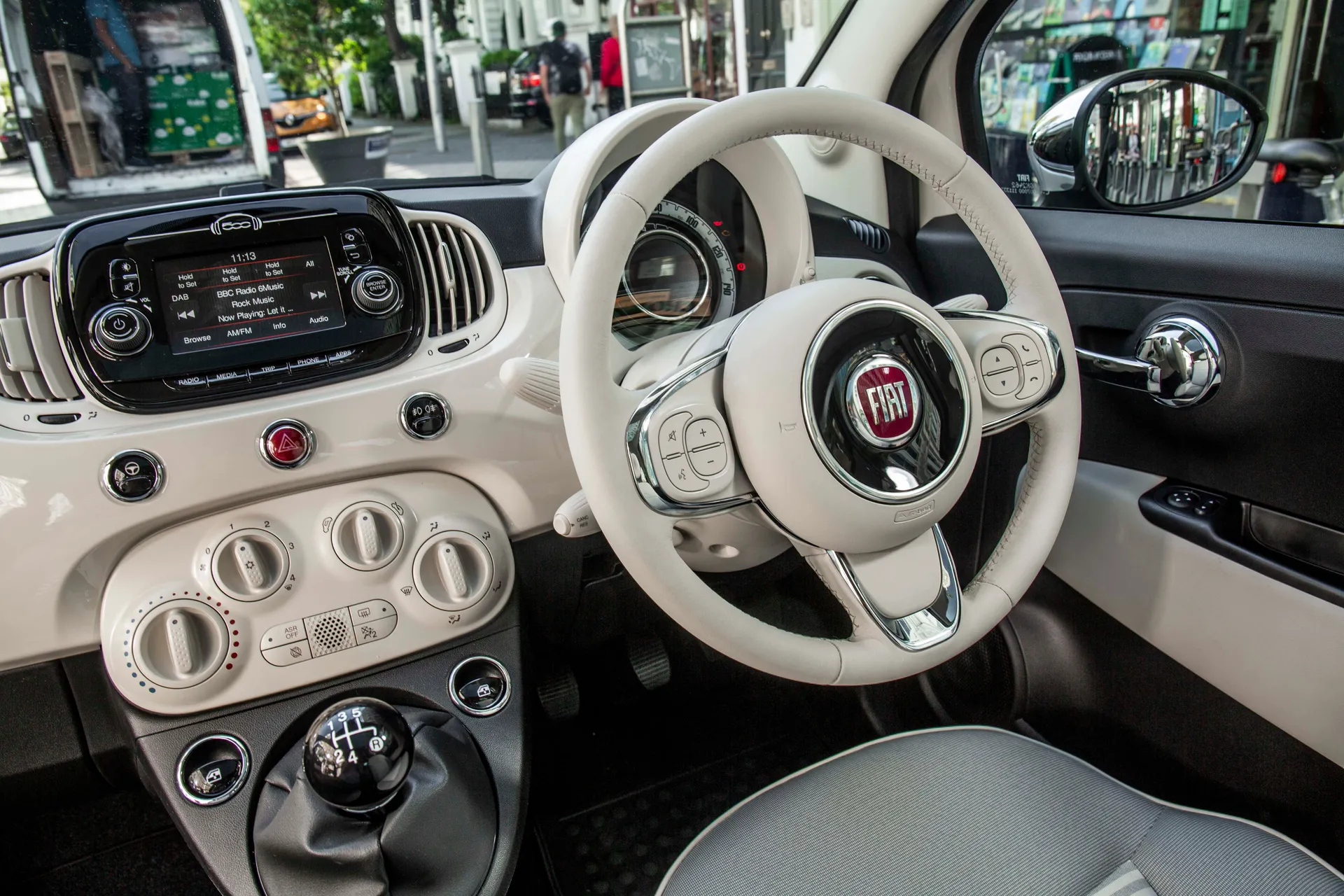
The Fiat 500 is not a practical car. You get just 185 litres of boot space, which is significantly less than the 250-260 litres you get in the Volkswagen Up, Hyundai i10 and Suzuki Ignis. The good news is that the car is easy to squeeze into a garage, with compact exterior dimensions. It measures 3632mm long, 1683mm wide and 1527mm high.
The Fiat 500 doesn’t really get much in the way of in-car storage, either. You get a pair of cup holders in the centre console and a compact cubby box for loose change. But both of the door pockets are small and narrow, which makes them good for carrying bits of paper or a slimline mobile phone, and very little else.
The cabin is covered in thick layers of cheap plastic that will be hardwearing and easy to clean. Small children will (just about) fit into the rear seats. However, if you want to squish two adults into the back of the 500, you'll need to slide the front seats forward to such a degree that the driver and front passenger will find themselves pinned against the dashboard. The Fiat 500 has three-doors (there's no four-door model), which means your passengers will have to climb over the front seats (which fold forward) to get in and out.
A smart 7.0-inch colour screen is fitted to most models and is easy to use and mounted quite high, which makes it straightforward to use on-the-move. It also has Apple CarPlay and Android Auto connectivity, which lets you plug your phone in via the USB to mirror its display via the touchscreen.
Quality and finish
Like we said a moment ago, the Fiat 500’s cabin is full of nostalgic design touches and vibrant colours aimed at providing a cheery and fun environment, and in many cases, that brings a variety of glossy-looking panels and glitzy finishes that help deliver the desired effect.
Look beyond the glitzy bits, though, and you’ll realise that there’s an element of smoke-and-mirrors going on. These fancy parts distract you from the otherwise rather dowdy materials on display. Even the top of the dashboard is made from hard and scratchy plastic, while the plastics on the doors and around the footwells are even more drab. If anything, the contrast between the good bits and the bad bits makes the bad bits look even worse. It’s still a cheery environment, but not a high-class one.
Infotainment: Touchscreen, USB, nav and stereo in the Fiat 500
Early 500s are sufficiently old that they were offered with a single-slot CD player serviced by a tiny LCD display. While not very advanced, this system is at least very easy to use. Since a 2016 facelift, most versions have been given a smart 7.0-inch colour touchscreen that is easy to use. It’s mounted quite high on the dashboard, which makes it easy to see and reach on-the-move. It also has Apple CarPlay and Android Auto connectivity, which lets you plug your phone in via the USB to mirror its display via the touchscreen. It does have a tendency to reflect sunlight, though, meaning it can be hard to read on sunny days.
Space and practicality: Fiat 500 boot space
You might think it churlish of us to criticise a car as small as the 500 for not being very practical, because that’s plainly not what it was designed for. That’s fair enough, but the fact remains that there are several other city car contenders that are just as small, but that do a far better job at carrying both passengers and luggage.
Most people will be alright in the front seats, which have decent space, although particularly long-limbed folk might still want to find some other means of travel. However, clamber into the two rear seats - which is fairly difficult in itself because the three-door-only body style means you have to tip the front seat forwards and climb over it - and you’ll find that they’re so tight on both headroom and legroom that only children will fit. And even then, they might spend the entire journey complaining about feeling cramped. A Volkswagen Up or Hyundai i10 provides way more rear space, enough for a pair of sensibly sized adults to get comfy.
These rivals also do much better for boot space, providing around 250-260 litres compared to the paltry 185 litres you get in the Fiat. There’s also a load lip to lift items over, while the opening is rather narrow.
The rear seats fold down, but entry-level versions have a single-piece backrest that’s not awfully versatile, while it’s split 50-50 in others. Whatever the case, the seats don’t fold flush to the floor, leaving you with a load area that’s both stepped and sloped.
The good news is that the car is easy to squeeze into a garage, with compact exterior dimensions. It measures 3632mm long, 1683mm wide and 1527mm high.
Handling and ride quality: What is the Fiat 500 like to drive?
"The newest versions of the Fiat 500 are offered only with a 70PS 1.0-litre mild hybrid petrol. It's a bit slow and lacking in refinement on the motorway."
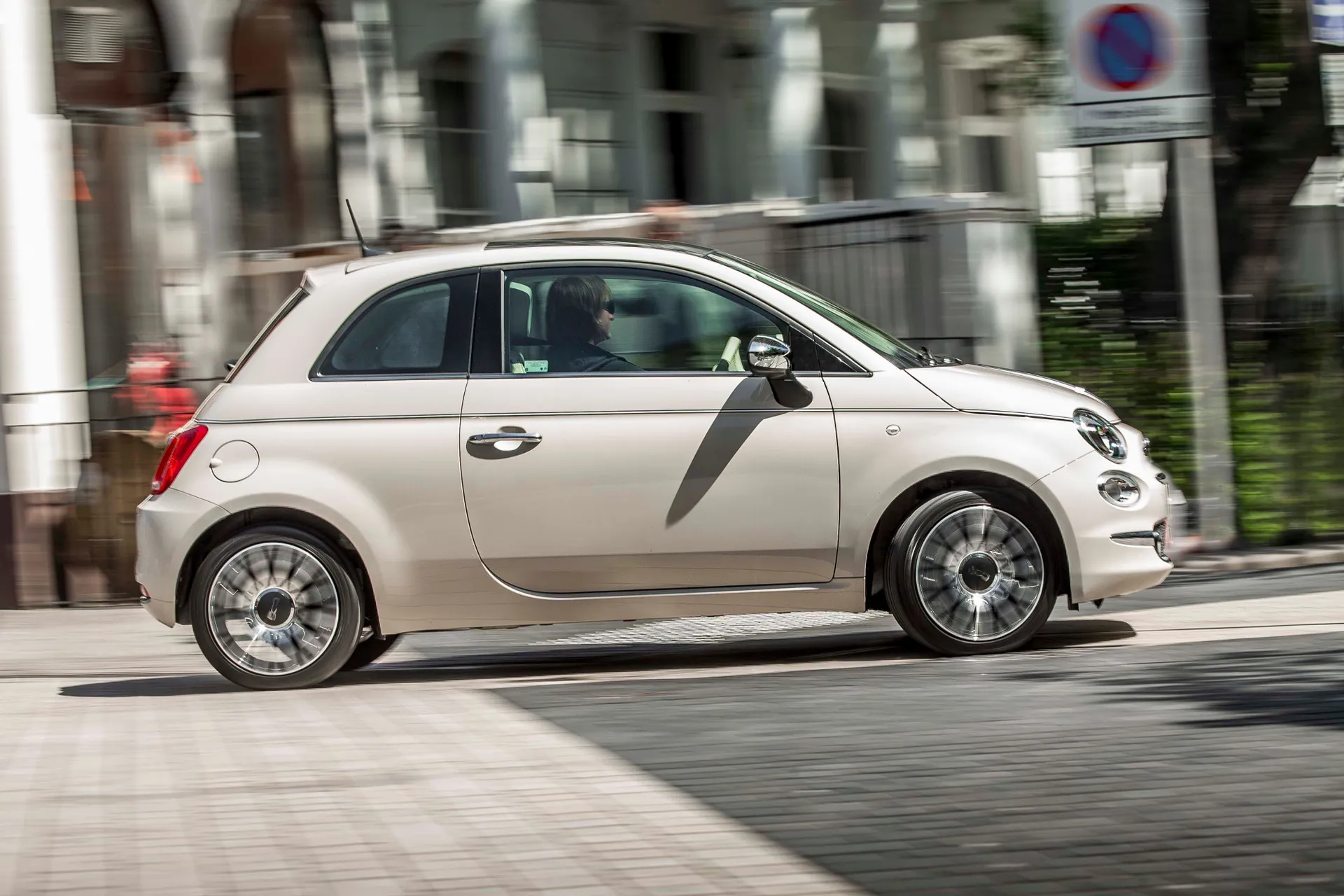
Predictably, the Fiat 500 is at its best in the city, where its teeny dimensions and super-light steering make it easy to pootle about the place, and road speeds aren’t high enough for the car’s dynamic shortcomings to be exposed.
Venture out of town, however, and those shortcomings quickly become apparent. The 500 has a very soft suspension, and this causes a variety of problems. The body leans over a lot as you turn a corner, even at moderate speeds, while the remote-feeling steering doesn't give you any sense of connection with the road.
More of a problem, though, is the ride. The suspension thumps beneath you over low-speed potholes, and bounces you around the rest of the time. Okay, so you wouldn’t expect a car like the 500 to be the last word in dynamic polish, but there are numerous rival city cars that do considerably better for both comfort and agility.
What engines and gearboxes are available in the Fiat 500?
These days, the Fiat 500 is offered only with a 70PS 1.0-litre mild hybrid petrol engine. Older versions of the 500 are available with Fiat’s turbocharged 0.9-litre TwinAir, a 1.2-litre petrol or a 1.4-litre petrol. A 1.3-litre diesel engine is also available on the older versions.
The 1.0-litre mild hybrid doesn’t have any leads or plugs. The powertrain combines a three-cylinder petrol engine with an electric motor and a lithium-ion battery that recharges itself by recovering energy from the brakes under deceleration. This recovered energy is used to boost acceleration and save fuel. The powertrain works quite well at low-speeds, but can be a bit noisy on the motorway. The 1.0-litre mild hybrid is linked to a six-speed manual gearbox, which is smooth and easy to use. There's no automatic option.
Early versions of the 1.2 petrol were smooth and reasonably civilised, if rather slow. Later, the 1.2 engine was paired exclusively with an automatic gearbox that felt like a poor match for the four-cylinder engine. The transmission occasionally caused the engine to emit a loud shriek of protest as the revs jumped around while the gearbox struggled to find the correct gear.
We’d advise steering clear of the TwinAir engine. It failed to live up to Fiat’s claims on both performance and economy, feeling rather flat and not being particularly frugal, while the noise it made was pretty unappealing.
Refinement and noise levels
The cheapest engines are probably best on this score because they’re simple and smooth. Just accept the fact that you’ll never get anywhere particularly quickly and don’t attempt to work them too hard, and they’ll stay reasonably civilised.
The strange two-cylinder TwinAir engine has a very unusual timbre to it, and not a very pleasant one at that, while the diesel is rather grumbly.
With the more recent hybrid version, you’ll do well to tell that it’s a hybrid, but that’s not because it juggles several power sources smoothly and imperceptibly. It’s because the use of the word ‘hybrid’ is actually quite misleading, and the hybrid system is little more than a slightly more sophisticated starter motor that applies a fraction of assistance to the 1.0-litre petrol engine.
The levels of wind- and road noise are nothing out of the ordinary for the class.
Safety equipment: How safe is the Fiat 500?
The Fiat 500 has been on sale since 2008, which is an extremely long time, and so it’s no surprise that safety standards are way behind those of most modern cars. For instance, it pre-dates the point in time that automatic emergency braking was made mandatory in all new cars, so the car still doesn’t have it to this day. And you can forget about adaptive cruise control and other semi-autonomous driver aids. In terms of safety tech, you'll get electronic stability control and a handful of airbags, but that’s about it.
The Fiat 500 achieved the full five stars from Euro NCAP when it was first tested in 2007, but by the time it was retested in 2017, that rating had fallen to three stars due to the testing standards becoming more stringent. Even that rating has now expired, and if the car was retested again today, we’d be surprised if it achieved any stars at all.
MPG and fuel costs: What does a Fiat 500 cost to run?
"The Fiat 500 is a small car and fuel costs are generally low. The 1.2-litre petrol was advertised with 47mpg, while the 1.0-litre mild hybrid had an equivalent figure of up to 61mpg."
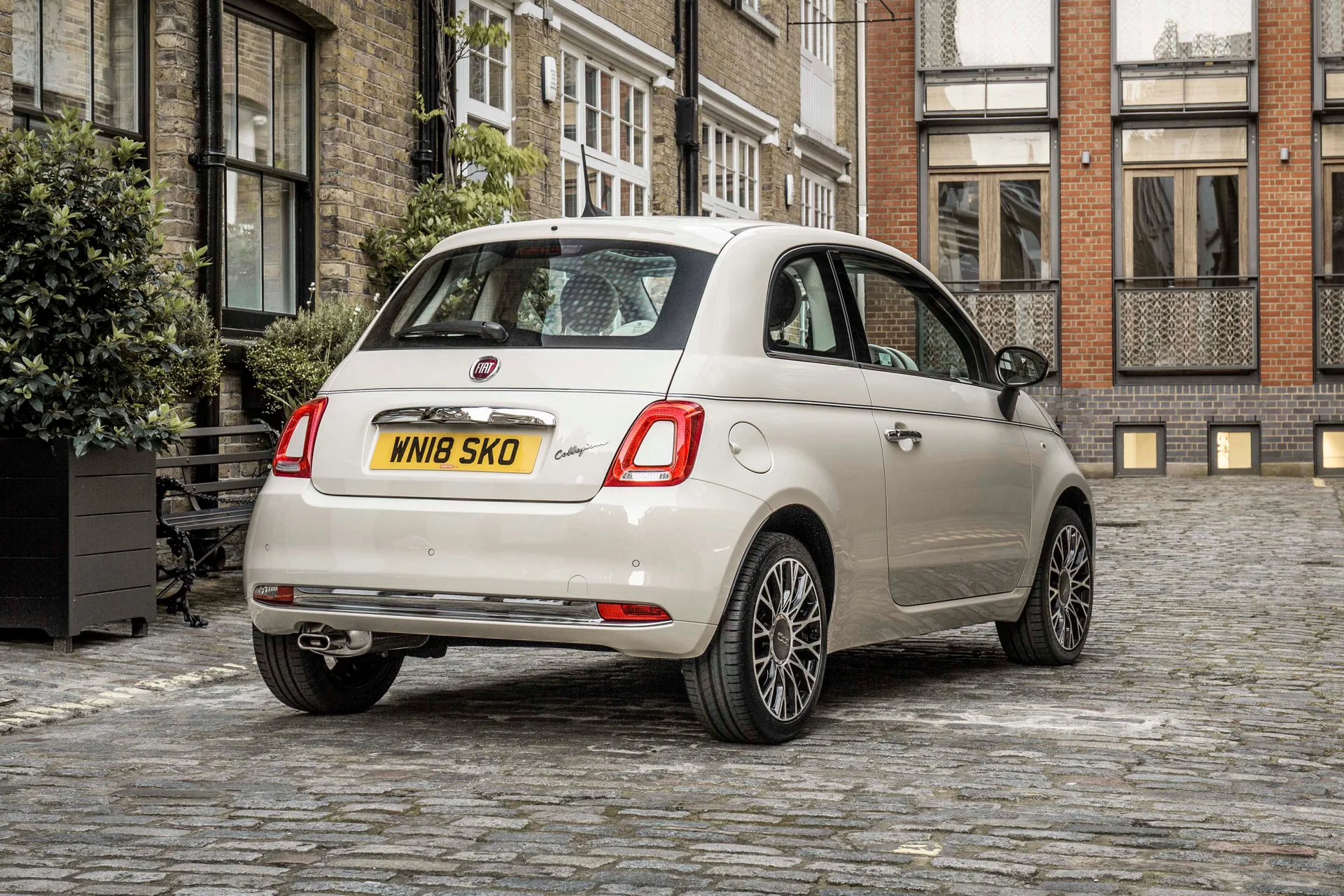
The petrol versions of the Fiat 500 are affordable when it comes to fuel - advertised economy ranges from 47-61mpg. Older models are offered with Fiat's 1.3-litre diesel, which officially returns 72–83mpg. The 0.9-litre TwinAir petrol has official figures of 67mpg.
How reliable is the Fiat 500?
Reliability isn't the Fiat 500's strong point. According to reports we’ve had from owners, gearboxes often go wrong, electrics can play up, while Fiat 500s fitted with the 1.2-litre petrol engine can struggle to reach the top of hills. Oh, and the door handles sometimes fall off, while interior trim rattles are pretty common. In fact, Fiat was voted as the third worst out of 29 manufacturers featured in the latest HonestJohn.co.uk Satisfaction Index, and the majority of the complaints were centred around - you guessed it - the 500. If you're looking for a reliable city car, we'd recommend a Toyota Aygo or Volkswagen Up instead.
Insurance groups and costs
The Fiat 500 is a small car that’s relatively affordable and relatively unpowerful, and low insurance groupings are a useful by-product of that, of the dozens of versions available, pretty much all of them sit between groups 7 to 15, so no 500 will cost a lot to insure (unless you choose one of the more powerful Abarth models, which will be a lot more). The exception to that rule is the Hey Google special edition, which randomly falls into group 3 for some reason.
VED car tax: What is the annual road tax on a Fiat 500?
If you buy a Fiat 500 built after April 1st, 2017, then you’ll pay the same flat rate of tax payable on any petrol or diesel car of the same period, and the amount currently stands at £190 per year. The hybrid doesn’t qualify for the £10 discount for alternatively fuelled vehicles, because it isn’t sophisticated enough. You won’t have to worry about the luxury car surcharge for cars that cost over £40,000 when new, because if you pay that for a 500, then you’ve been swindled, frankly.
If you buy a 500 built before that date, then you’ll be taxed according to a different set of rules where the sum you pay is governed by the CO2 emissions of your car. And that’s good news, because the 500’s small size, light weight and modest engines mean those are very low. On many versions a now-metaphorical tax disc will cost you nothing at all, while where a fee is payable, it’s likely to be only £20 or £35. The exceptions are cars fitted with the old 1.4-litre petrol engine, which can cost you as much as £210 per year.
Prices, versions and specification
"There are seemingly countless different versions of the Fiat 500. That means plenty of choice, but finding a spec to suit you might be difficult."
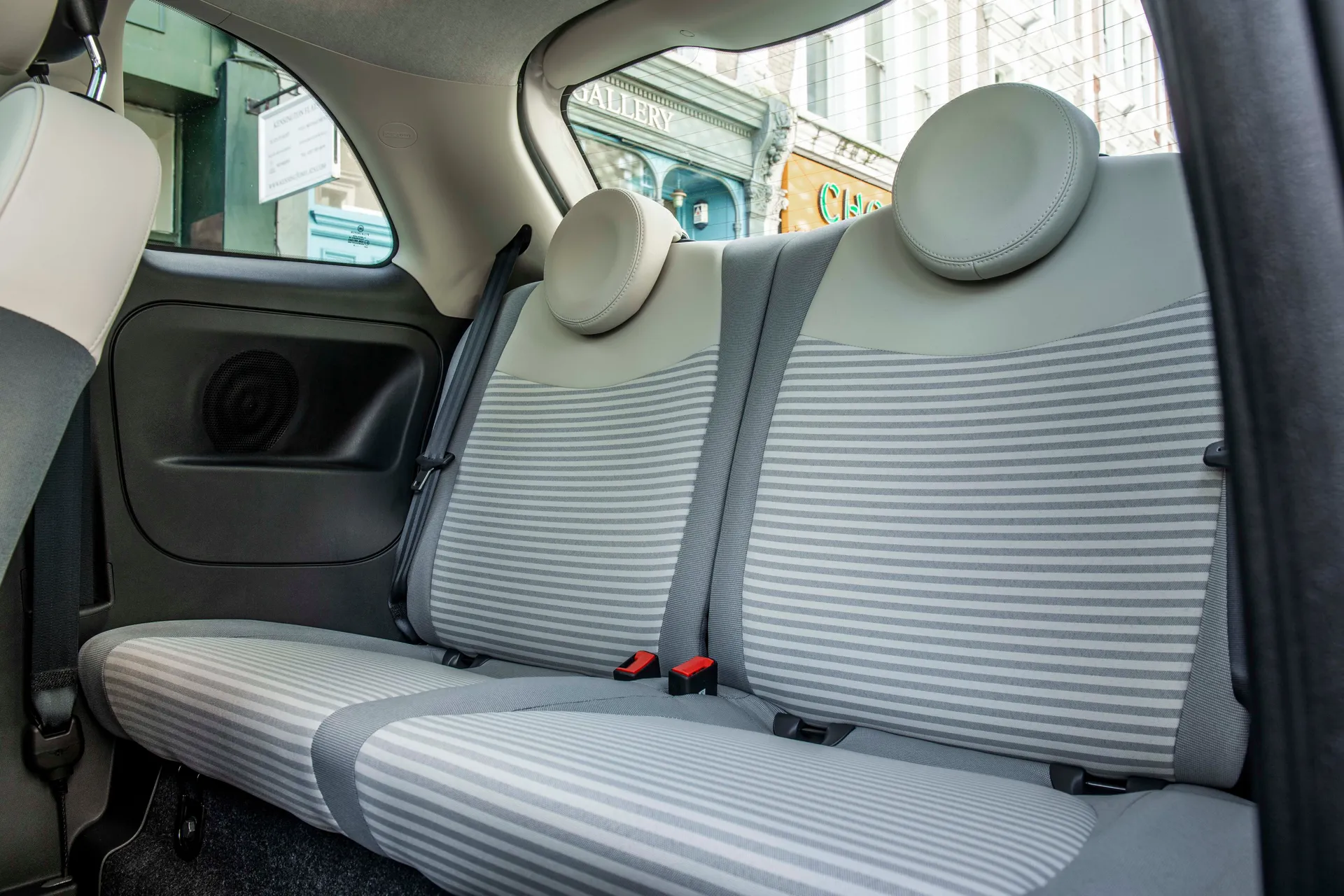
The Fiat 500 is a car that bucks conventional trends in this regard. You see, there have been countless variants of the car over its hugely long lifespan, ranging in price between impressively affordable and unbelievably expensive. And, it’s been around for such a long time that depreciation has had plenty of time to do its thing on older examples, but not enough time on nearly new ones. The effect of all that is that you can pay about as little or as much as you want for a 500, depending on the example you choose.
The cheapest ones in our listings on heycar start at around the £6,000 mark, but that’s because cars on our website can only be a maximum of eight years old. These will be basic 1.2 Pop models from 2016 or 2018, with the odd Lounge-trimmed car thrown in for good measure.
Conversely, you can have a year-old example of the Hybrid in DolceVita spec with delivery mileage on it for around £14,000.
Trim levels and standard equipment
The 500 has been around for an extremely long time, and Fiat made almost constant alterations to the structure of the trim levels available over the years. The Italian firm was also mad for a special edition, and seemed to release a new one every five minutes.
The result is that the used car market is littered with 500s with an enormous variety of weird and wonderful names (at last count, there were around 40), and it's impossible to keep up with the precise amount of kit that each one got. There’s also the fact that a huge amount of customisation was available, and this was very popular, so it’s entirely possible that you’ll never encounter two 500s that are quite the same.
For a decent slice of the 500's life, the range started with the Fiat 500 Pop, which ironically wasn't very popular with buyers owing to the fact it didn’t get a lot of equipment as standard.
The Fiat 500 Lounge was better. It had 15-inch alloy wheels, sunroof and rear parking sensors, along with the seven-inch touchscreen infotainment system with full Apple CarPlay and Android Auto connectivity.
The Fiat 500 Star added 16-inch alloy wheels and a seven-inch TFT display to the instrument cluster, while the more expensive Sport trim removed the sunroof and added an aerodynamic bodykit and a small spoiler to the rear of the car. A leather steering wheel was also included.
Ask the heycar experts: common questions
Is the Fiat 500 a reliable car?
Is it worth buying a Fiat 500?
What are the problems with the Fiat 500?
Fiat 500 Alternatives
Get our latest advice, news and offers
Keep me updated by email with the latest advice, news and offers from heycar.
By submitting you agree to our privacy policy
